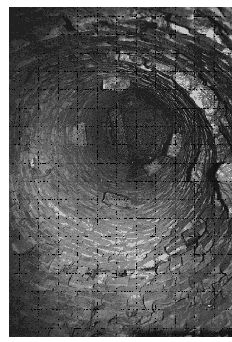New Treasure Act becomes Law
|
|
On 24th September the ancient law of Treasure Trove was
replaced with a new act designed to be more workable. The previous law, which dates
from the middle ages, only applied to a very few items which were rich in gold or silver,
and then only where it could be proved that they had been deliberately hidden. The
new law is more complicated but less ambiguous and therefore should capture many more
items, that would otherwise be lost to private collections.
The New Law
It includes all objects older the 300 years, containing at least 10% gold or silver
(also all objects of any material found at the same time). The exception to this
general rule is coins and this is where it gets complicated. In simple terms, coins
with less than 10% gold or silver found in groups of less than 10 are not considered
treasure, even when found with items which are. Of course objects covered in the
previous act carry the same protection. The circumstance of their loss, however, has
now no relevance. The law regarding reporting is very much the same as before and,
as before, if an item is deemed treasure, an inquest is held to established its true value
and a suitable reward is paid to the finder.
Sussex Arch. Soc.
If Wigan is at one end of the archaeology society spectrum, Sussex must be at the
other. Quoting from the CIA’s recent news letter:- founded in 1846 they have an
annual turnover of more than £1.2 million and a membership of over 2200. The
Society has a full-time staff of 31 with 43 part-time workers, runs 6 museums and has
entertained 170,000 visitors in the past year. Their yearbook is up to volume 135
and one of the several properties they own is Fishbourne Roman Palace with 90,000 visitors
and an annual excavation school. Wigan’s aspirations may not be quite as grand
as Sussex but I am sure we can match them for enthusiasm for our historical heritage.
Next Meeting 
The next meeting of the Society will be on Wednesday 5th November at the history shop
at 7.30 pm as usual. This month we will be having a talk by Tony France, co-author
(with Donald Anderson) of The Wigan Coal & Iron Company, Life & Times of The
Bradshaigh’s of Haigh and The Standish Coalfield.
Sir Roger
During the English Civil War Sir Roger Bradshaigh of Haigh was just a teenager and
therefore too young to get involved. When Charles I was executed in 1649 hostilities
ended, but a year later when his son Charles II landed in Scotland, the
Royalist’s cause was revitalised. This time Sir Roger was arrested as a
sympathiser, but was later released on assurance that he would not help them.
However after the Battle of Wigan Lane, which took place less than a mile from the Haigh
estate, Sir Roger visited the site and rescued Sir William Throgmordon who had been left
for dead. He brought him to Haigh while he recovered. However at this time Sir
Roger had something completely different on his mind. His main concern had been how
he could get the water out of his cannel mines.
Great Haigh Sough
Cannel coal had been mined on the Haigh estate since Tudor times but by the mid
1600's all the seams had been worked out to below the level of the water table. So
between 1650 and 1670 Sir Roger set about the construction of a massive tunnel which would
stretch for about a mile under the Haigh estate. 350 years later the Great Haigh
Sough is still working, draining water from the ancient workings and to prove it Tony
France has unique footage of the interior, demonstrating the excellent quality of 17th
century engineering. On Wednesday Tony will also be showing pictures that have never
been published and tell stories from the time when Haigh was a prominent coal producer.
Hope to see you at the meeting - B.A.
|



